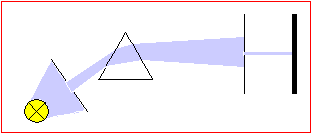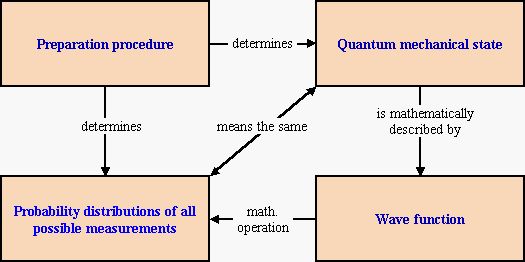 Preparation
of quantum mechanical states
Preparation
of quantum mechanical states Preparation
of quantum mechanical states
Preparation
of quantum mechanical states
Complete preparation leads to reproducible predictions about the probabilities of all possible measurements on the physical object. To make this connection between preparation and measured probability distributions more explicit, one introduces the notion of the quantum mechanical state. The state is identified with the specification of a probability distribution for each possible measurement. Mathematically, a quantum mechanical state is described by a wave function. With certain mathematical operations, it is possible to extract from the wave fuction the probabilities of all conceivable experiments. The conceptual connection between preparation, state, wave function and probability distribution is illustrated in the graphics below.

More detailed information on this subject (Lesson on preparation)
To get back to the current lesson use the back button of your browser.